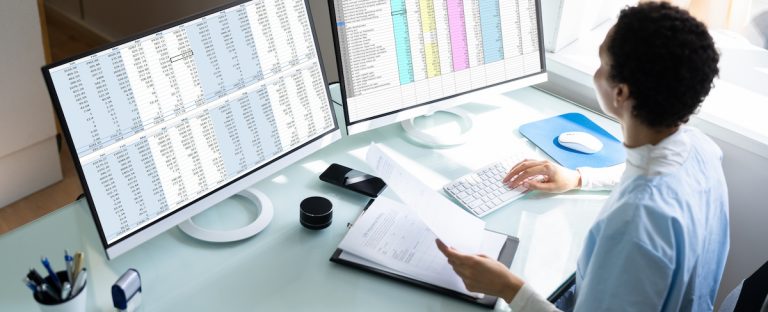The world of insurance billing is complex, and even more so for holistic practices. Accurate coding and billing practices ensure a streamlined reimbursement process so your practice can get paid and deliver the best care to your patients.
Current Procedure Terminology, or CPT codes, are used to document the majority of medical procedures performed by health care providers. These medical billing codes characterize the type of procedure being done so providers can properly bill insurance companies and receive reimbursements for administered services.
Acupuncture practices use codes that correspond to their unique services. Since services are usually coded in 15-minute increments, you will use one code for the initial 15 minutes of service and then a separate code for additional units of time; acupuncture CPT codes will only vary if you include electronic stimulation in your treatment.
Why is Using the Correct Acupuncture Billing Codes Important?
When it comes to holistic practices, ensuring accurate billing and coding is an important indicator of a practice’s financial health since mistakes can result in costly fines and reimbursement delays. Some estimates find inaccurate coding and billing can result in errors on up to 80% of medical bills – resulting in weeks of editing and resubmissions that delay reimbursement and waste time for your staff.
If your holistic practice continues to make mistakes with acupuncture codes, you can have increased denial rates and declining insurance reimbursements, which could put your practice at risk. Accurate acupuncture CPT codes and billing practices can help ensure your holistic practice reaches its full revenue potential.
New Billing Codes for 2022
The American Medical Association (AMA) stated that 43 percent of changes in the 2022 CPT code set are related to new technology services and the expansion of the proprietary laboratory analyses (PLA) code set; 15 codes tied to COVID vaccine procedures were also added.
 New codes to handle remote therapeutic monitoring were added:
New codes to handle remote therapeutic monitoring were added:
- 98975
- 98976
- 98977
- 98980
- 98981
Plus, new codes for principal care management were included:
- 99424
- 99425
- 99426
- 99427
These codes will allow providers to report care management services for patients with chronic conditions, such as lower back pain, in an effort to improve monitoring these complex health problems.
Top 4 Essential Acupuncture Billing Codes
The bulk of the services you will bill to insurance will likely fall under four essential acupuncture CPT codes. Since acupuncture services are always billed in 15-minute increments, your practice will use one code for the initial 15 minutes of service and then a separate code for additional units of time. Your acupuncture billing codes will only vary if you include electronic stimulation in your treatment.
- 97810 Initial Acupuncture: Initial 15-minute insertion of needles, personal one-on-one contact with the patient. (Do not report in conjunction with 97813; use one or the other.)
- 97811 Subsequent Unit of Acupuncture: Use one unit per each additional 15 minutes of personal one-on-one contact with the patient after the initial 15 minutes, with re-insertion of needles. (May be used in conjunction with either 97810 or 97813)
- 97813 Initial Acupuncture with Electrical Stimulation: Initial 15-minute insertion of needles, personal one-on-one contact with the patient. (Do not report in conjunction with 97810; use one or the other.)
- 97814 Subsequent Unit of Acupuncture with Electrical Stimulation: Use one unit per each additional 15 minutes of personal one-on-one contact with the patient, with re-insertion of needles. (May be used in conjunction with either 97810 or 97813)
Acupuncture Billing Codes for Medicare
January marks the two year anniversary of Medicare expanding their coverage options to include acupuncture for treating chronic lower back pain. CPT codes related to billing Medicare for acupuncture treatments are as follows:
- 97810: Acupuncture, one or more needles, without electrical stimulation, initial 15 minutes of personal one-on-one contact with the patient
- 97811: Each additional 15 minutes of personal one-on-one contact with the patient, with re-insertion of needles
- 97813: Acupuncture, one or more needles, with electrical stimulation, initial 15 minutes of personal one-on-one contact with the patient
- 97814: Each additional 15 minutes of personal one-on-one contact with the patient, with re-insertion of needles
- 20560: Services with needle insertion(s) without injection(s) of 1 or 2 muscle(s)
- 20561: Services with needle insertion(s) without injection(s) of 3 or more muscle(s)
Prices will depend on the region of your holistic practice; look up specific codes based on your location here.
Codes for Patients
Medical billing codes for patients can be broken down into two categories, new and returning patients:
New Patients Billing Codes
Use these acupuncture CPT codes for when your holistic practice receives new patients. As a reminder, a new patient is defined as a patient who hasn’t received professional services from you or another provider of the same specialty who has belonged to your practice within the past three years.
- 99201 Evaluation/Management (Limited): Presenting problems are self-limited or minor: requires a problem-focused history, problem-focused examination, and straightforward medical decision-making; the provider typically spends 10 minutes face-to-face with the patient
- 99202 Evaluation/Management (Expanded): Presenting problems are of low to moderate severity; requires an expanded problem-focused history, an expanded problem-focused examination, and straightforward medical decision-making; the provider typically spends 20 minutes face-to-face with the patient
- 99203 Evaluation/Management (Detailed): Presenting problems are of moderate severity; requires a detailed history, a detailed examination, and medical decision-making of low complexity; the provider typically spends 30 minutes face-to-face with the patient
- 99204 Evaluation/Management (Comprehensive): Presenting problems are of moderate to high severity; requires a comprehensive history, a comprehensive examination, and medical decision-making of moderate complexity; the provider typically spends 45 minutes face-to-face with the patient
Returning Patients Billing Codes

These CPT codes for acupuncture can be used for your established patients. Returning patients are those who have received any professional services from you or another provider of the same specialty who has belonged to your practice within the past three years
- 99211 Evaluation/Management (Minimal): Presenting problems are minimal; the provider typically spends five minutes face-to-face with the patient
- 99212 Evaluation/Management (Limited): Presenting problems are self-limited or minor; requires a problem-focused history, a problem-focused examination, and straightforward decision-making; the provider typically spends 10 minutes face-to-face with the patient
- 99213 Evaluation/Management (Expanded): Presenting problems are of low to moderate severity; requires an expanded problem-focused history, expanded problem-focused examination, and medical decision-making of low complexity; the provider typically spends 15 minutes face-to-face with the patient
- 99214 Evaluation/Management (Detailed): Presenting problem(s) are of moderate to high severity; requires a detailed history, a detailed examination, and medical decision-making of moderate complexity; providers typically spend 25 minutes face-to-face with the patient
Acupuncture CPT Codes for Physical Therapy Treatments
Acupuncture practices use a variety of treatments and modalities to help their patients. These treatments and modalities help strengthen, relax, and heal muscles. Below are a few commonly-used acupuncture CPT codes your practice may encounter.
- 20550 & 20551 Tendon Injection: Single tendon injection for the treatment of fasciitis. Could include multiple injections into a single tendon sheath (CPT code 20550) or the tendon origin (CPT code 20551)
- 20552 & 20553 Muscle Injection(s): Injections involving single or multiple trigger points. Could be used to treat one or two muscles (CPT code 20552) or three or more muscles (CPT code 20553)
- 97010 Heat Therapy: Application of a modality to one or more areas; hot or cold packs
- 97016 Cupping: The use of a vasopneumatic device may be considered reasonable and necessary for the application of pressure to an extremity for the purpose of reducing edema
- 97026 Infrared Therapy: The application of infrared therapy is considered medically necessary for patients requiring the application of superficial heat in conjunction with other procedures or modalities to reduce or decrease pain/produce analgesia or reduce stiffness/tension, myalgia, spasm, or swelling
- 97110 Therapeutic Exercise: One or more areas, every 15 minutes; therapeutic procedures to develop strength and endurance, range of motion, and flexibility with direct (one-on-one) patient contact
- 97112 Neuromuscular Reeducation: Treatments to restore movement, balance, coordination, kinesthetic sense, posture, and/or proprioception for sitting and/or standing activities with direct (one-on-one) patient contact
- 97140 Manual Therapy: Techniques such as mobilization and manipulation, manual lymphatic drainage, and manual traction, one or more regions, every 15 minutes with direct (one-on-one) patient contact
- 97124 Massage Therapy: Includes effleurage, petrissage, and/or tapotement (stroking, compression, percussion) with direct (one-on-one) patient contact
- 97530 Kinetic Activities: Use of dynamic activities to improve functional performance, every 15 minutes with direct (one-on-one) patient contact
Improve Your Acupuncture Practice’s Billing Processes and Revenue Cycle Management with HBS!
Documenting and billing the right acupuncture codes for insurance reimbursement can be a time-consuming process. No acupuncture practice wants to spend more time billing and coding than it does treating patients and expanding its practice. That’s where an experienced medical billing company with acupuncture CPT code experience can be an invaluable partner.
The team at Holistic Billing Services understands the unique needs of acupuncture practices and has extensive experience working with acupuncture codes to ensure you’re billing patients and insurance companies correctly. With our help, you can start seeing patients covered by insurance quickly and painlessly, no matter what type of acupuncture services you offer.
To learn more about how Holistic Billing can help streamline your practice and accelerate your revenue cycle management, contact our team today.
Over the last few years, more people than ever before are turning to acupuncture and other holistic treatments to alleviate ailments. As more people intentionally seek this service, your practice is likely to grow in size as members of your community begin to visit.
With this exciting growth in business comes the not-so-exciting amounts of medical billing paperwork – not to mention the headache of it all! Holistic Billing Services knows medical billing can be a challenge to navigate, especially for acupuncture practices. This post addresses some of the most frequently asked questions about billing for acupuncture to equip you with the fundamentals of medical billing.
What is Medical Billing?
Medical billing involves a healthcare provider submitting, following up on, and appealing claims with health insurance companies in order to receive payment for services rendered; such as testing, treatments, and procedures. It can be a long, grueling process that requires jumping through hoops left and right to receive payment for services rendered.
Why Is Medical Billing Important for Acupuncture Practices?
Though it may be a complicated process, it is also absolutely necessary for acupuncture practices because it is the most common way of getting paid for services rendered. The majority of your patients will likely have some form of insurance as payment, so your practice needs to be adept at navigating the many facets of dealing with insurance companies. This includes being knowledgeable of the appropriate medical billing codes for the treatment you provide to your patients, keeping track of the relevant patient records, and understanding how to communicate with the insurance company in order to be reimbursed.
Top Acupuncture Billing Questions and Answers
Medical billing can be a challenging portion of your acupuncture practice’s administrative needs. Let’s review some of the top acupuncture billing questions with our expert answers:
When Should I Update My Insurance Verifications and Medical Credentials?
Insurance verification is a critical component of billing insurances for acupuncture, and medical credentialing is a key part of this, too. Current verifications have the strongest correlation with successfully getting claims paid, which is obviously essential to your acupuncture practice. Patient plans and/or benefits will often change at the start of a new year, so it’s imperative you request new insurance verifications as soon as the new calendar year starts.
I am In-Network for a Couple of Insurance Companies, How Often Should I Re-Negotiate My Rates?
Managed care contracts are usually written to auto-renew on an annual basis so you will want to analyze your contracts annually. Use the end of the year to calculate your per-visit reimbursement for a given contract and compare it to per-visit reimbursements for your cash and out-of-network patients. Based on these figures, you can determine if the volume of patients seen from a particular payer offsets any variance in reimbursement. Then, negotiate accordingly.
Which Procedure Codes are Most Frequently Used by Acupuncturists?
In general, the most frequently used CPT procedure codes are those relating to medical evaluation and management, a few of which include:
- 99201-05: New Patient Office Visit
- 99211-15: Established Patient Office Visit
- 99281-85: Emergency Department Visit
- 99241-45: Office Consultation
Specifically for acupuncturists, the following are the most frequently used CPT codes:
- 97810: Initial Acupuncture Session (Tip: do not report this in conjunction with 97813; use one or the other)
- 97811: Subsequent Unit of Acupuncture (You may use it in conjunction with either 97810 or 97813)
- 97813: Initial Acupuncture with Electrical Stimulation (Don’t report this in conjunction with 97810; use one or the other)
- 97814: Subsequent Unit of Acupuncture with Electrical Stimulation (This may be used in conjunction with either 97810 or 97813)
Accurate medical billing codes are instrumental for streamlining your billing process and further growing your acupuncture practice.
Do You Have a List of Insurances That Will Pay for Acupuncture That I Can Use?
Unfortunately, we don’t have a perfect answer for this! Insurance benefits will vary from plan to plan – even within the same insurance company – so there’s no quick shortcut for knowing if the patient‘s insurance will cover acupuncture. It’s really a case-by-case basis when serving patients who might have Medicare, go through the VA, or hold a private insurance policy otherwise. HBS recommends that you verify the patient‘s benefits before you treat the patient by contacting the payer directly or confirming their insurance plan prior to each visit.
Do I Have to Implement Electronic Health Records (EHR) in My Practice?
No, although you will need to document each patient visit, there is no legal mandate to implement EHR for your acupuncture practice. The Centers for Medicare and Medicaid Services (CMS) rolled out Meaningful Use non-compliance penalties in 2015, but most acupuncture practices do not meet the minimum revenue standard for Medicare so these penalties should not apply to your practice.
Though not legally required, using electronic health records can greatly streamline your administrative tasks and help your acupuncture practice operate more efficiently.
Can I Bill Insurances for Massage Therapy?
Yes, there are insurance plans that will pay for massage therapy treatments performed by a licensed massage therapist or licensed acupuncturist! As always, be sure to verify the patient’s insurance benefits information and utilize accurate medical billing codes. The following are the most frequently used for massage therapy sessions:
- 97124: Massage Therapy
- 97140: Manual Therapy

- 97112: Neuromuscular Re-Education
- 97010: Hot/Cold Packs
- 97110: Therapeutic Exercise
Have More Questions About Acupuncture Billing? Reach Out to the Experts at HBS!
HBS is an acupuncture billing service that is experienced in billing for both licensed massage therapists and licensed acupuncturists. As an experienced billing provider for holistic practices, Holistic Billing Services can help your practice navigate the insurance billing process to minimize denials and increase revenue.
With our team of experts by your side, you can focus more on treating patients to help your practice grow rather than worrying about insurance billing. To learn more about our acupuncture or massage therapy billing services, talk to one of our billing and coding experts today.
Medical billing and coding is a complicated, but necessary, process for both medical and holistic practices looking to be reimbursed for services. However, the world of medical billing processes can become rather complicated very quickly, with people throwing around a lot of technical terms that holistic practices may not be accustomed to hearing or dealing with. If your acupuncture practice plans on accepting insurance, you will need to become familiar with this terminology to maximize your insurance reimbursements and minimize denied claims.
You will frequently hear the following common acupuncture billing terms when dealing with insurance claims or working with an experienced acupuncture billing company like Holistic Billing Services. To ensure a streamlined acupuncture billing experience, keep this list handy in case you ever need to quickly reference unfamiliar acupuncture billing terms!
What is Acupuncture Billing?

Medical billing is the process of healthcare providers submitting claims with insurance companies in order to be reimbursed for their services. This can include anything from treatments, procedures, and testing. The medical billing process is essential for most practices to receive payments.
Acupuncture billing practices are not the same as traditional medical billing and have a different set of requirements. Before billing can be initiated, many holistic practices must first be credentialed with health insurance companies. On top of your holistic practice’s insurance enrollments, the right billing, coding, and SOAP documentation must be used.
Acupuncture billing uses its own unique set of codes. Since acupuncture services are always coded in 15-minute increments, you will use one code for the initial 15 minutes of service and then a separate code for additional units of time. Acupuncture CPT codes will only vary if you include electronic stimulation in your treatment.
Understanding the correct CPT codes for your medical practice is essential across all specialties when it comes to insurance billing. Holistic practices, including massage therapists, have unique health insurance billing needs. This includes specific CPT codes for massage therapy. Accurate massage therapy insurance billing is key for reimbursements to be processed faster and with fewer denials and delays.
Looking for a list of the most commonly used massage therapy CPT codes? Look no further! Holistic Billing is an expert when it comes to massage therapy insurance billing. Find the answers to many of the most common questions about the world of massage therapy insurance billing and CPT codes below!
How Do You Bill for Massage Therapy?

Just as with conventional medicine, holistic practices must bill insurance companies to receive reimbursements for their services using CPT codes. These Current Procedural Terminology codes, or CPT codes, are used by insurance providers to document most medical procedures performed by healthcare providers across all specialties. These CPT codes characterize the type of procedure being done so healthcare providers can bill insurance companies for the right services and procedures.
Like other holistic practices, there are unique CPT codes for massage therapy treatments that are specific to the specialty. For a massage therapist to receive quick and reliable payments from the insurance company, insurance coding and billing must be completed accurately. Errors can result in lengthy delays to the reimbursement process – or even denials.
The world of insurance billing is complex, and even more so for holistic practices. Understanding when to use the right acupuncture billing codes and procedures is essential to any successful medical practice – whether holistic or traditional. Accurate coding and billing practices ensure a streamlined reimbursement process so your practice can get paid and deliver the best care to your patients.
As a billing company focused on holistic healthcare providers, Holistic Billing is an expert in the world of acupuncture billing CPT codes. In any given year, roughly half of our new clients have never billed insurance before they started with Holistic Billing Services, so we are quite accustomed to their most frequently asked questions. Find the answers to many of the most common questions about Acupuncture CPT codes and billing practices below!
The Centers for Medicare and Medicaid Services (CMS) released a series of changes in 2018 to the way E/M coding would be documented and billed for reimbursement. In partnership with the healthcare billing community, we reacted swiftly to the announcement, pointing out a series of potential problems that could arise when the changes went into effect for integrative medicine practitioners. In response, CMS formed a working group to consider another way of streamlining documentation burdens without focusing away from the delivery of medically necessary care. After about a year of negotiations and planning, we are happy to report that the changes were finally released to the public as part of the 2020 Physician Final Rule.
Understanding E&M Codes
An abbreviation for “evaluation and management,” E/M codes (alternatively known as E&M codes or sometimes referred to as “office visits”) are used by private practices to bill for a range of encounters that occur between patients and physicians, therapists, or practitioners. As a subset of CPT coding (specifically, CPT code range 99201-99499), E/M codes provide three pieces of information to insurance providers for reimbursement.
- Patient Type: Indicates whether the patient is new or established.
- The setting of Service: Indicates where the healthcare services were provided. For most holistic practices, this will be an office or outpatient setting.
- Level of Service Provided: E/M coding indicates the complexity of the health services delivered. A higher value code suggests a more complex service.
Under the original E/M coding structure, the level of service was determined by a complex calculation involving three elements: patient history, physical examination, and medical decision making. Each factor required the appropriate documentation to help indicate what appropriate level of service and then to bill accordingly. While holistic practitioners could use time as a determining factor when substantial counseling or care coordination was involved, that process required them to follow a very ambiguous set of guidelines.
How Are E/M Codes Changing in 2021?
Federal E/M coding guidelines will undergo a substantial change as of January 1, 2021. These changes will specifically affect coding for office and outpatient visits (CPT codes 99201-99215), making them extremely important for holistic practices to review.
New E/M Coding Rules for 2021
- New patient level 1 code (99201) is eliminated altogether, reducing the number of levels for new patient E/M visits to four. Established patients will retain the standard five coding levels.
- History and physical examination will no longer be determining factors when identifying the appropriate level of care; this doesn’t mean documentation requirements are going away altogether. Clinically relevant history and examinations must still be documented when necessary.
- Medical decision making or time can be used to determine the appropriate level of service.
- Adjustments are made to Medicare reimbursements for E/M codes. Since only a few holistic services are eligible for Medicare reimbursements, they may not impact every practice.
What Do E/M Changes Mean for Your Holistic Practice?
The overall goal of these changes was to emphasize medical decision-making and reduce the overall volume of paperwork associated with documentation. Still, the changes could have broader consequences for many practices. Most EHR systems overly rely on multiple bullet point entries to document patient history and log physical exam results. These tend to slow down patient visits and used because it was integral to the calculation used to determine the proper level of service code for E/M billing. Since the changes coming in 2021 will focus exclusively on time and medical decision-making factors to make this decision, the electronic medical records used by holistic practices should be simplified and updated to reflect the updates and speed up documentation.
Medical decision making for E/M coding is broken down into four different types, each reflected by a specific range of CPT codes:
- Straightforward (codes 99202 & 99212)
- Low (codes 99203 & 99213)
- Moderate (codes 99204 & 99214)
- High (codes 99205 & 99215) (not recommended for holistic and integrative medicine practices.)
When making a “medical decision,” physicians or therapists must consider three distinct elements pertaining to the patient:
- Number and complexity of problems being addressed.
- Amount and/or complexity of data to be reviewed and analyzed.
- Risk of complications and morbidity or mortality of patient management.
These three elements are rated according to four escalating levels that match the four types of medical decision making. The final E/M code is determined by examining each element’s level to assess the overall complexity of the decision. In order to qualify for a “Moderate” E/M code, for instance, at least two of the three elements must be at least “Moderate.” If one element is “Low,” one is “Moderate,” and another is “High,” the final E/M code would fall somewhere in the “Moderate” range (CPT codes 99204 & 99214).
This form of decision making obviously brings some degree of ambiguity, but CMS has done its best to give clear guidelines within each element to minimize confusion. A more practical approach is for practitioners to make E/M code selections based on the amount of time they spend with patients. These guidelines are much simpler than previous versions. For example, to bill for a “Moderate” encounter with an established patient (CPT code 99214), the interaction must last between 30 and 39 minutes.
Holistic practices will have to reassess their documentation and EHR systems to ensure they’re providing the information insurance companies are looking for when evaluating E/M billing codes. By far the biggest shift will be the transition from an emphasis on patient history and physical exams, which will hopefully reduce the overall level of documentation in these categories.
There is a lingering question about how reimbursement rates will be affected by the 2021 E/M code changes. While most holistic practices will be billing private insurers instead of Medicare, their reimbursement structure is often impacted by changes made to Medicare rates. The team at Holistic Billing will continue to monitor the situation as more information becomes available following the 2021 rollout.
Prepare Your Practice for Success with Holistic Billing!
As a medical billing specialist with a particular focus on acupuncture billing, massage therapy billing, and chiropractic billing, Holistic Billing Services has been helping independent practices adapt to new regulatory guidelines for many years. We’re always watching for the latest insurance billing announcements that could impact your holistic practice. We make sure we’re delivering the very best advice when it comes to your credentialing, billing and coding needs. If your acupuncture, massage therapy, or chiropractic practice needs help adapting to the latest round of E/M coding changes, the experts at Holistic Billing can provide the resources and guidance you need to boost your insurance reimbursements and keep your revenue cycle management moving along.
To find out what outsourced billing and coding services with Holistic Billing can do for your practice, contact our experienced team today!
Keeping track of treatment codes to ensure accurate medical billing can be a challenge for small holistic practices. Proper billing requires familiarity with all the relevant CPT treatment codes and how they interact with one another. Not understanding how billable units are calculated, for instance, could result in an acupuncture or massage practice not getting reimbursed properly for its services. In addition to billing and coding, however, these practices also need to make sure that they’re keeping accurate patient records to document holistic treatments.
Why is Keeping Proper Patient Records Essential for Your Holistic Practice?
Put simply, keeping proper treatment records is often a necessary step for getting paid for patient services. That’s because many insurance companies request treatment notes to ensure that the treatments being administered conform to the specifications outlined in their policies. Simply providing billing information with the proper treatment codes is usually not sufficient for an insurer to evaluate whether or not the care being administered qualifies as good practice. Without supporting documentation that provides more detail about the treatment, the claim could be considered suspect and subsequently denied.
There is often a tendency among holistic practices, such as acupuncturists or massage therapists, to believe that they do not need to keep the same records as western-style medical practices. While this may have been (somewhat) true when most patients paid for services out of their own pockets, today these practices are submitting billing claims for reimbursement to private insurance providers, all of whom are very concerned with documenting exactly what services they’re reimbursing. For holistic practices that want to start treating these patients, it is extremely beneficial for them to view their practice the same way any other professional healthcare provider would regard theirs. That means keeping detailed and accurate medical records to improve the overall quality of care, provide evidence of treatment to third-party payers, and shield the practice from potential liability.
The Benefits of Keeping Proper Patient Records
In addition to the obvious benefit of helping a practice get its billing claims approved, keeping accurate patient records is extremely valuable for auditing purposes. When a holistic practice is audited, it is typically instructed to prepare certain files for review, but the auditors will then randomly select several additional files at the time of the audit to make sure the documentation process is consistent. If an office has poor documentation, it can be very difficult to explain why treatments were administered or prove that they were necessary.
Accurate documentation is also important when it comes to providing high-quality care to patients. When patients receive multiple treatments over a period of time, there should be a record of what treatments they received, when, and why. The size of the practice should not be relevant when it comes to the extent of recordkeeping. Without accurate documentation, it can be difficult to know whether or not the best possible treatment is being administered at any given time.
For example, even if an acupuncture practice only sees three insurance patients a day, three days a week, that still means over 450 acupuncture treatments were administered over the course of a year. If a patient returns a year later for additional treatment and there is no documentation of their first visit, the acupuncturist is left to rely on memory when determining what treatment was administered. At best, this will result in highly inefficient treatments. At worst, it could open them up to liability.
3 Tips for Keeping Patient Records
Fortunately, there are a few easy tips for keeping accurate, detailed patient records. Documentation may take a little bit longer to do properly, but the benefits of accurate patient records far outweigh the inconvenience of taking five to ten minutes charting or documenting treatments after patient visits.
1. Remember the 7 Cs
In order to comply with HIPAA regulations, patient records should always follow the same basic guidelines regardless of practice type:
- Correct
- Clear
- Concise
- Complete
- Consecutive
- Comprehensive
- Confidential
2. Don’t “Carry Over” Electronic Health Records (EHR)
For holistic practices that are documenting treatments with an electronic records system, there is often an option to “carry over” information, or copy one set of medical records into another patient’s chart. While this can sometimes be a time-saving trick, it’s important to remember that copying the same notes across multiple patients is going to look extremely suspicious to an auditor (as well it should). Every treatment should be considered unique, even if the previous five patients received the exact same treatment.
3. Use the SOAP Note Format
Long utilized by medical practices to document patient treatments, SOAP notes provide an overview of the entire patient visit and give context to whatever treatment was administered. Many payers require SOAP notes to be submitted alongside billing claims to ensure that treatments were medically necessary.
There are four characteristics of SOAP notes for holistic practices:
- Subjective: An overview of the information the patient brings into the visit, including their primary complaint, patient description of symptoms, progress since the previous visit, initial pain scale value, and medical history.
- Objective: A quantifiable evaluation of the patient performed by a healthcare professional, including measurable data like vital signs, physical symptoms, laboratory results, and other clinical documentation.
- Assessment: An interpretation of the connection between the Subjective and Objective information available to produce a diagnosis of the patient’s condition.
- Plan: A description of what treatment will be administered based on the diagnosis as well as recommendations for moving forward. This information should be very specific. For instance, an acupuncturist should indicate what the pain scale value was pre and post-treatment.
Improve Your Record-Keeping with Holistic Billing Services
Keeping detailed patient records in addition to managing billing claims can be quite a handful for many holistic health practices. Every moment spent filing paperwork is time that could be spent treating additional patients and increasing revenue. That’s why partnering with a billing service like Holistic Billing can help your practice focus its attention on the most important aspects of patient care. We can help to streamline your billing process and get your claims reimbursed faster and with fewer denials while you work on expanding your business. To learn more about how Holistic Billing Services can transform your practice, contact our experienced team today for a consultation.
As a billing company focused on holistic healthcare providers, we’ve introduced our share of acupuncturists to the world of acupuncture insurance billing codes.








